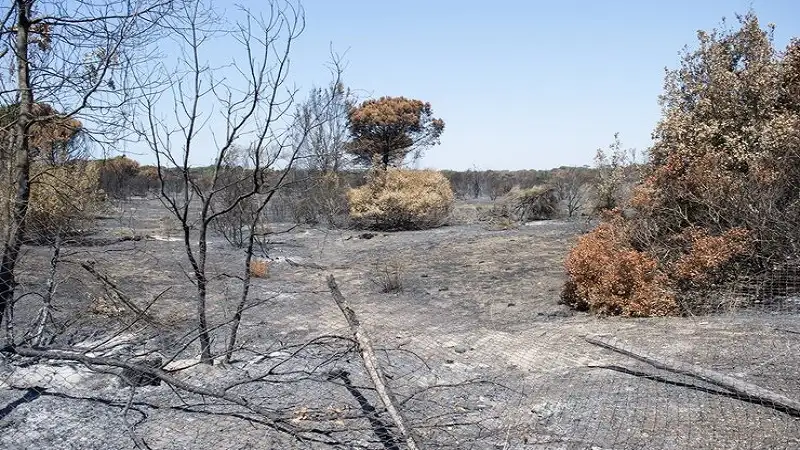Avista National Park Damage Fine is a breathtaking sanctuary of natural beauty, offering refuge to countless species of plants and animals. This park is not just a haven for nature lovers but also a crucial area for biodiversity preservation. However, an unfortunate incident of significant damage recently thrust the park into the spotlight, leading to a hefty fine being imposed on the responsible party. This article delves into the incident, the rationale behind such fines, and the importance of safeguarding our natural heritage.
What Happened at Avista National Park?
An incident occurred where a visitor, or group of visitors, caused extensive damage to a protected area within the park. This could have been due to negligence, such as littering, Avista National Park Damage Fine illegal off-trail hiking, or even deliberate actions like vandalism. The damage disrupted the park’s ecosystem and required immediate attention and restoration efforts.
Why Do Parks Impose Fines for Damages?
National parks impose fines to deter destructive behavior and ensure the preservation of their delicate ecosystems. Such penalties serve as a reminder of the responsibility that comes with visiting these natural havens. For instance, fines are often calculated based on the cost of restoration and the extent of the harm caused.
Fines are not unique to Avista National Park. For example, in Yellowstone National Park, damaging thermal features or disturbing wildlife can lead to fines of thousands of dollars. These measures are vital to protect the invaluable resources these parks offer.
The Fine Imposed on the Offender
In this case, the fine imposed was substantial, reflecting the severity of the damage. Authorities factored in the cost of repairing the affected area and the environmental impact. This serves as a warning to others who might disregard park rules and regulations.
Financial and Environmental Impact
The financial toll of restoring damaged areas in parks is significant. Funds are often redirected from other conservation efforts, delaying important projects. More importantly, the environmental consequences can be devastating, with long-lasting effects on plant life, wildlife, and water systems.
Public Reaction to the Incident
The public’s reaction was mixed. While many applauded the park Avista National Park Damage Fine authorities for taking swift action, others criticized the fine as excessive. Environmental groups, however, emphasized the importance of holding individuals accountable for actions that harm natural spaces.
How Such Incidents Can Be Prevented
Preventing such incidents begins with awareness. Visitors need to understand and respect park rules. Stricter monitoring systems, such as surveillance cameras and patrols, can help deter harmful activities. Ultimately, every visitor plays a role in ensuring the preservation of these cherished places.
Legal Implications for Offenders
National parks are protected under stringent laws, and violating these can lead to hefty penalties or even jail time. In the case of Avista National Park, legal action was likely taken against the offender, setting a precedent for others.
The Role of Park Authorities
Park authorities work tirelessly to protect and maintain these natural spaces. After the incident, Avista National Park Damage Fine they likely assessed the damage, began restoration efforts, and reviewed policies to prevent future occurrences.
Community Involvement in Conservation
Conservation is a collective effort. Communities can participate in volunteer programs, adopt areas of the park, and spread awareness about its significance. Public involvement ensures a sense of shared responsibility.
Learning from Past Incidents
Incidents of damage are unfortunately not rare in national parks. Each case provides valuable lessons on improving enforcement and raising awareness. By studying these cases, authorities can develop better strategies to protect their parks.
Importance of Protecting Natural Heritage
National parks like Avista are vital for biodiversity, offering a sanctuary for countless species. They also provide cultural and recreational value, making their preservation a shared duty for all.
Encouraging Responsible Tourism
Responsible tourism is key to ensuring the longevity of natural parks. By following eco-tourism principles, visitors can enjoy these spaces without leaving a negative impact.
Steps Taken After the Incident
After the damage was reported, Avista National Park likely launched an extensive restoration project. They may have also introduced stricter rules and increased surveillance to prevent similar events in the future.
Conclusion
The incident at Avista National Park Damage Fine is a sobering reminder of the fragility of our natural spaces. As visitors, it’s our duty to respect and protect these areas for future generations. Let’s take this as a call to action and ensure we tread lightly in the great outdoors. Read More famerose.com.
FAQs
- Why was a fine imposed at Avista National Park?
A fine was imposed due to significant damage caused to a protected area within the park. - How are damage fines calculated in national parks?
Fines are calculated based on the cost of restoration and the severity of the damage. - What measures can visitors take to prevent damage to parks?
Visitors should follow park rules, stay on designated trails, and avoid disturbing wildlife. - Can fines be contested legally?
Yes, offenders can contest fines, but they must provide evidence to support their case. - What are the benefits of volunteering for national park conservation?
Volunteering helps preserve natural spaces, promotes awareness, and contributes to community efforts.
